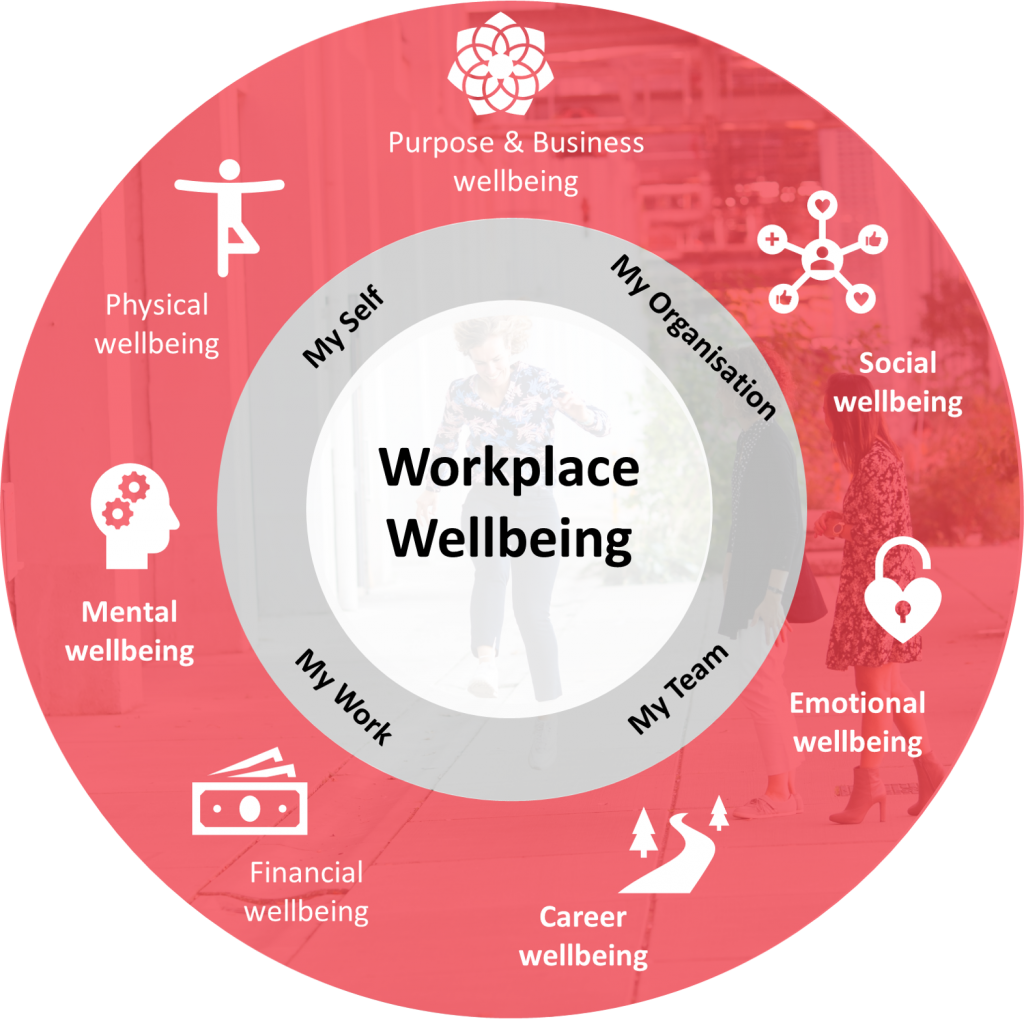Mental Wellbeing And Productivity: The Impact Of Workplace Policies

Table of Contents
The Link Between Mental Wellbeing and Productivity
The correlation between employee mental health and their output is undeniable. When employees feel supported, valued, and mentally well, their performance soars. This isn't just anecdotal; numerous studies support this connection. Improved mental health directly translates to tangible benefits for businesses:
- Reduced absenteeism and presenteeism: Employees experiencing better mental wellbeing take fewer sick days and are more engaged and focused while at work, reducing the costly impact of presenteeism (being at work but not fully productive).
- Increased employee engagement and motivation: A positive work environment fosters a sense of belonging and purpose, motivating employees to contribute their best. This increased engagement leads to higher quality work and improved efficiency.
- Enhanced creativity and problem-solving skills: Stress and anxiety can impair cognitive function. Prioritizing mental wellbeing improves cognitive abilities, leading to more creative solutions and effective problem-solving.
- Improved collaboration and teamwork: Good mental health promotes positive relationships and effective communication, fostering stronger teamwork and collaboration.
- Lower employee turnover rates: Employees who feel valued and supported are more likely to remain with a company, reducing costly recruitment and training expenses associated with high turnover.
Research consistently demonstrates this link. For instance, a study by the World Health Organization found that workplace mental health interventions can significantly reduce lost productivity. Another study published in the Journal of Occupational and Environmental Medicine showed a strong correlation between employee mental health and workplace performance. These findings highlight the crucial importance of investing in employee mental wellbeing to achieve sustainable business success.
Supportive Workplace Policies that Boost Mental Wellbeing
Implementing supportive workplace policies is paramount to fostering a mentally healthy and productive workforce. Several key strategies can significantly improve employee mental wellbeing:
Flexible Work Arrangements
Offering flexible work arrangements, such as flexible hours, remote work options, and compressed workweeks, significantly contributes to improved work-life balance. This empowers employees with greater control over their schedules, reducing stress and enhancing autonomy.
- Reduced stress: Flexible schedules alleviate the pressures of rigid routines, enabling employees to better manage competing demands.
- Increased autonomy: The ability to manage one's own time fosters a sense of control and responsibility, boosting morale and productivity.
- Improved family-work integration: Flexible work arrangements enable employees to better integrate their work and personal lives, particularly beneficial for parents or caregivers. This reduces work-family conflict, a major source of stress for many employees. A strong remote work policy is a crucial aspect of this.
Mental Health Resources and Support
Providing access to mental health resources is a crucial step in destigmatizing mental illness and encouraging help-seeking behavior. This includes:
- Employee Assistance Programs (EAPs): EAPs offer confidential counseling and support services to employees, helping them address personal and work-related challenges.
- Mental health days: Offering dedicated mental health days allows employees to take time off specifically for mental health concerns without using valuable sick leave.
- Access to mental health professionals: Providing resources to connect with mental health professionals, such as therapists or counselors, ensures employees have access to professional support when needed. This can include subsidies for therapy or partnerships with mental health providers.
These initiatives contribute to:
- Reduced stigma around mental health: Openly providing mental health support helps normalize seeking help and reduces the shame or embarrassment often associated with mental health issues.
- Increased help-seeking behavior: Easy access to resources encourages employees to proactively seek help when needed, preventing problems from escalating.
- Improved employee morale: Knowing their employer cares about their mental wellbeing boosts employee morale and fosters a sense of loyalty and trust.
Promoting a Positive Work Culture
Cultivating a positive and supportive work environment is essential for employee mental wellbeing. This involves:
- Open communication: Encouraging open and honest communication between employees and management reduces misunderstandings and fosters trust.
- Encouraging work-life balance: Promoting a culture that values work-life balance helps prevent burnout and encourages employees to prioritize their wellbeing outside of work.
- Recognizing employee contributions: Regularly acknowledging and appreciating employee contributions boosts morale and reinforces a sense of value and belonging.
These aspects contribute to:
- Increased job satisfaction: A positive work environment fosters a sense of belonging and purpose, improving job satisfaction and commitment.
- Reduced stress levels: A supportive and collaborative environment reduces workplace stress and enhances overall wellbeing.
- Improved team cohesion: Positive interactions and open communication lead to stronger team relationships and increased collaboration.
Training and Education
Providing mental health awareness training for both employees and managers is crucial. This education can include:
- Mental health training for employees: This training increases understanding of mental health issues, promoting empathy and reducing stigma.
- Managerial training: Managers need training to recognize signs of mental health struggles in their employees and to provide appropriate support. This also helps them manage teams effectively in the face of mental health challenges within the team.
These training programs lead to:
- Increased understanding of mental health issues: Education empowers employees to better understand mental health challenges, both their own and those of their colleagues.
- Improved communication skills: Training improves communication skills, enabling employees and managers to discuss mental health concerns openly and constructively.
- Better support for colleagues: Training equips employees with the skills to support colleagues struggling with their mental health, fostering a culture of care and compassion.
Measuring the Impact of Mental Wellbeing Policies
To ensure the effectiveness of implemented policies, it's crucial to measure their impact. Several methods can be employed:
- Employee surveys and feedback mechanisms: Regular surveys and feedback sessions provide valuable insights into employee perceptions of the workplace and the effectiveness of mental wellbeing initiatives.
- Tracking absenteeism and presenteeism rates: Monitoring these metrics helps evaluate the impact of policies on employee attendance and productivity.
- Monitoring employee engagement scores: Measuring employee engagement through surveys and other metrics provides insights into employee morale and motivation.
- Analyzing productivity metrics: Tracking key performance indicators (KPIs) related to productivity helps assess the impact of mental wellbeing initiatives on overall business performance. These metrics should be aligned with the organization’s specific goals.
By consistently monitoring these metrics, companies can refine their strategies and ensure their mental wellbeing policies are truly effective.
Conclusion
In conclusion, implementing effective workplace policies significantly improves employee mental wellbeing, leading to a more engaged, productive, and ultimately, successful workforce. Prioritizing mental health initiatives isn't just socially responsible; it's a smart business strategy. The evidence clearly shows a direct link between mental wellbeing and productivity. To boost workplace wellbeing, improve employee mental health, and enhance workplace productivity through mental wellbeing initiatives, consider implementing the strategies discussed above. Start by assessing your current policies, conducting employee surveys to gauge needs, and investing in comprehensive mental health resources and training programs. By making mental wellbeing a priority, your company can foster a thriving and productive environment where everyone can flourish.

Featured Posts
-
 Daisy May Coopers Engagement Ring A Closer Look
May 03, 2025
Daisy May Coopers Engagement Ring A Closer Look
May 03, 2025 -
 Glastonbury Stage Times Chaos Fans Outraged Over Scheduling Conflicts
May 03, 2025
Glastonbury Stage Times Chaos Fans Outraged Over Scheduling Conflicts
May 03, 2025 -
 Tuerkiye Endonezya Ortak Anlasmalari Imzalanan Yeni Is Birlikleri
May 03, 2025
Tuerkiye Endonezya Ortak Anlasmalari Imzalanan Yeni Is Birlikleri
May 03, 2025 -
 The 1975 And Olivia Rodrigo Glastonbury Festival 2024 Headliner Rumours
May 03, 2025
The 1975 And Olivia Rodrigo Glastonbury Festival 2024 Headliner Rumours
May 03, 2025 -
 Reform Uk Branch Officers Resign Allegations Of Poor Mp Treatment
May 03, 2025
Reform Uk Branch Officers Resign Allegations Of Poor Mp Treatment
May 03, 2025
